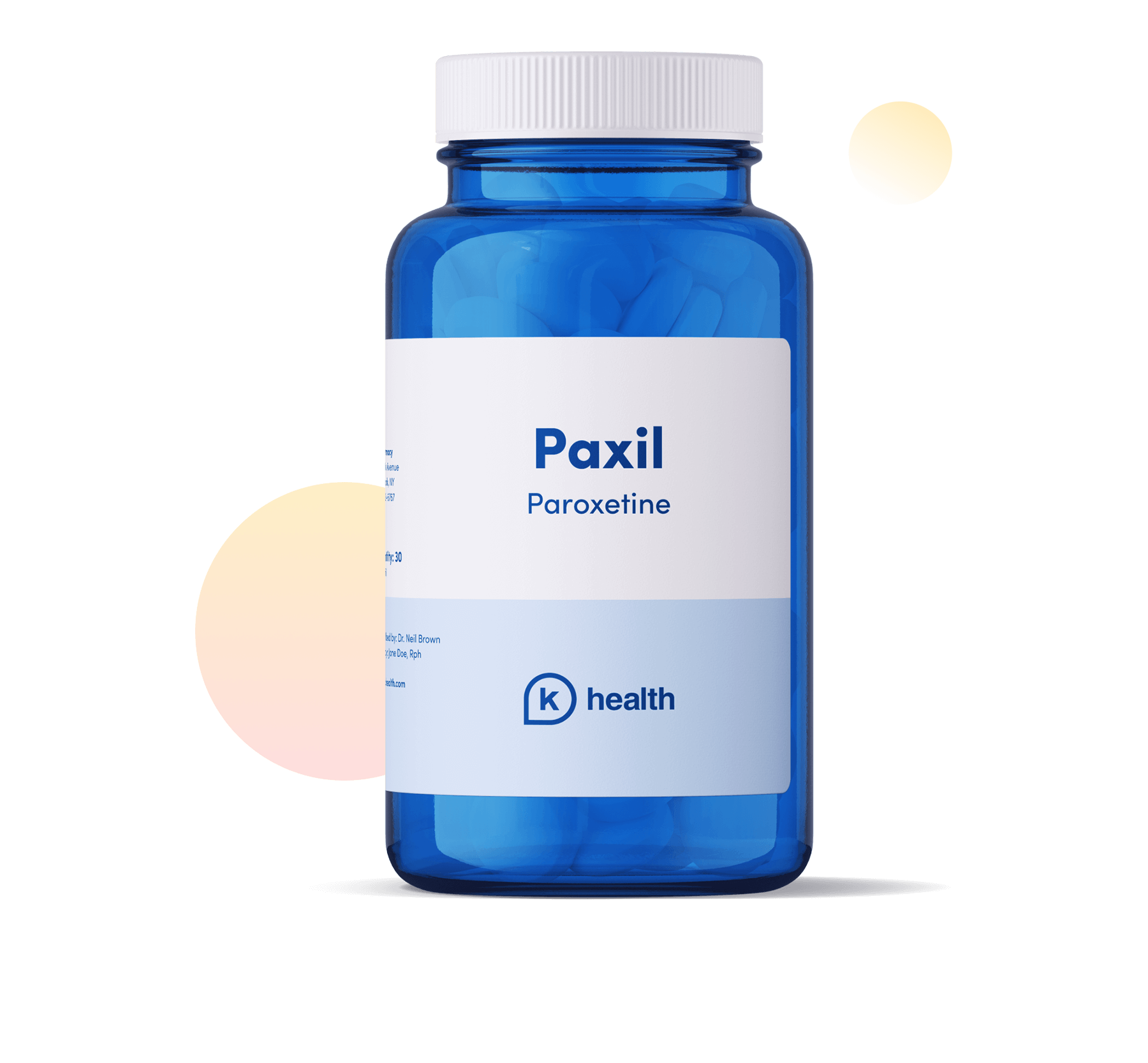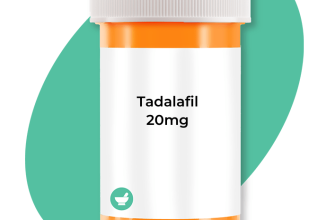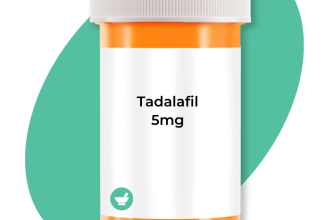Paxil, known generically as paroxetine, is an antidepressant that targets the brain’s serotonin levels, effectively alleviating symptoms of depression and anxiety disorders. Patients seeking relief from their mental health challenges may consider this medication as part of their treatment regimen. Always consult your healthcare provider to determine if Paxil is suitable for your specific needs.
This medication has shown efficacy in treating various conditions, including major depressive disorder, obsessive-compulsive disorder, and social anxiety disorder. Dosing typically starts low to minimize side effects and is gradually increased based on individual response and tolerance. Close monitoring during this adjustment phase is standard to ensure optimal outcomes.
Potential side effects may include nausea, dizziness, or fatigue. Notably, some individuals experience withdrawal symptoms if treatment is abruptly discontinued. A gradual tapering off of the medication under medical supervision is recommended to avoid such challenges.
As clinical studies indicate, while Paxil can significantly improve quality of life, it is essential to maintain open communication with your healthcare team. Regular follow-ups help in assessing the medication’s impact and making necessary adjustments for continued success in treatment.
- Understanding Paxil: A Comprehensive Guide
- Dosage and Administration
- Potential Side Effects
- What is Paxil and How Does It Work?
- Indications for Use of Paxil in Treatment
- Potential Side Effects and Risks of Paxil
- Dosage Guidelines for Paxil Administration
- Adjustment for Specific Conditions
- Geriatric and Hepatic Impairment Considerations
- Interactions Between Paxil and Other Medications
- Common Drug Interactions
- Monitoring and Management
- Strategies for Safely Discontinuing Paxil Medication
Understanding Paxil: A Comprehensive Guide
Paxil, known generically as paroxetine, falls within the category of selective serotonin reuptake inhibitors (SSRIs). This medication primarily treats depression, anxiety disorders, obsessive-compulsive disorder, and post-traumatic stress disorder. For those dealing with these conditions, Paxil can significantly improve overall well-being.
Dosage and Administration
Typically, Paxil comes in tablet form and should be taken once daily, preferably in the morning. Start with the lowest dosage, often 20 mg, and allow the doctor to adjust based on response and tolerability. Never abruptly halt the medication; consult a healthcare provider for guidance on tapering the dosage.
Potential Side Effects
Common side effects include nausea, drowsiness, dizziness, and dry mouth. Some users may experience sexual dysfunction, which can affect adherence to the treatment plan. If side effects become overwhelming or severe, seek medical advice promptly. Monitoring for any worsening of symptoms is crucial.
Paxil may interact with other medications, such as certain blood thinners and MAO inhibitors. Always disclose your full medication list to your healthcare provider to minimize risks.
Understanding Paxil’s effects, proper usage, and potential risks can empower you to make informed decisions and enhance your treatment journey. Regular follow-ups with a healthcare professional ensure the best approach to managing your mental health.
What is Paxil and How Does It Work?
Paxil, or paroxetine, is a prescription medication primarily used to treat depression, anxiety disorders, and certain types of obsessive-compulsive behavior. It belongs to a class of drugs known as selective serotonin reuptake inhibitors (SSRIs). By increasing the level of serotonin in the brain, Paxil helps improve mood, alleviate anxiety, and enhance emotional well-being.
The mechanism of Paxil involves inhibiting the reuptake of serotonin, making more of this neurotransmitter available in the synaptic cleft. This action effectively elevates mood and can reduce the symptoms associated with anxiety and depression. Dosage often starts low and may be adjusted based on individual response and tolerability.
Patients typically experience an improvement in symptoms within a few weeks, although some may notice benefits sooner. It’s important to communicate with a healthcare provider throughout treatment to monitor progress and address any side effects. Always follow the prescribed regimen and do not discontinue use abruptly, as this can lead to withdrawal symptoms.
In addition to its primary uses, Paxil may also be prescribed for conditions like post-traumatic stress disorder (PTSD), panic disorder, and social anxiety disorder. Each of these conditions benefits from the increase in serotonin facilitated by Paxil, which helps manage stress responses and anxiety levels.
It’s essential to review all medications and supplements with a healthcare provider to avoid potential interactions. Being informed about how Paxil works can empower individuals to make educated decisions regarding their mental health treatment.
Indications for Use of Paxil in Treatment
Paxil is primarily indicated for the treatment of major depressive disorder. Patients experiencing persistent feelings of sadness, loss of interest in daily activities, and changes in sleep or appetite may find relief with this medication.
It effectively addresses anxiety disorders, including generalized anxiety disorder (GAD) and social anxiety disorder. Individuals struggling with excessive worry or fear in social situations often benefit from Paxil’s calming effects.
Paxil also treats panic disorder, reducing the frequency and severity of panic attacks. Those who face sudden episodes of intense fear or discomfort can experience improved stability when using this medication.
Obsessive-compulsive disorder (OCD) is another condition managed by Paxil. It helps decrease intrusive thoughts and repetitive behaviors that can disrupt daily life.
In addition to these conditions, Paxil is indicated for premenstrual dysphoric disorder (PMDD). Women suffering from severe emotional and physical symptoms related to their menstrual cycle may find symptom relief with this treatment.
Finally, Paxil is effective in managing post-traumatic stress disorder (PTSD). Individuals with PTSD often deal with flashbacks, avoidance behaviors, and heightened arousal. Paxil assists in alleviating these distressing symptoms.
Potential Side Effects and Risks of Paxil
Paxil (paroxetine) may cause various side effects. Monitor your health closely while on this medication.
Common side effects include:
- Nausea
- Dizziness
- Drowsiness
- Dry mouth
- Insomnia
- Decreased libido
Less common but serious side effects can occur, including:
- Suicidal thoughts or behaviors, particularly in young adults
- Serotonin syndrome, which may cause confusion, hallucinations, seizures, or severe muscle rigidity
- Abnormal bleeding or bruising
- Severe allergic reactions, including rash, itching, and difficulty breathing
- Withdrawal symptoms, such as dizziness, insomnia, and flu-like symptoms after discontinuation
Long-term use of Paxil can lead to weight gain and increased cholesterol levels. Regular check-ups with healthcare providers are advisable to monitor weight and cholesterol.
Discontinuation should be gradual to minimize withdrawal effects. Consult a healthcare professional before stopping or adjusting the dosage.
Discuss all medications, supplements, and health conditions with your physician to avoid harmful interactions. Special care is needed for individuals with a history of bipolar disorder, seizures, or liver problems.
Stay informed and proactive regarding any changes in mood or behavior, as timely intervention can address serious side effects effectively.
Dosage Guidelines for Paxil Administration
Adults typically start with a dose of 20 mg per day, taken in the morning. This can be adjusted based on the individual’s response and tolerability. The maximum recommended dose is 50 mg per day.
Adjustment for Specific Conditions
For patients with major depressive disorder, initiate treatment at 20 mg. In cases of obsessive-compulsive disorder, a starting dose of 40 mg may be necessary. Adjustments should occur after several weeks based on the therapeutic response.
Geriatric and Hepatic Impairment Considerations
For elderly patients or those with hepatic impairment, start with a lower dose, such as 10 mg per day. Regularly assess for efficacy and side effects, and consider increasing the dose cautiously.
Always consult with a healthcare provider for personalized dosing and changes. Monitoring for adverse reactions, especially during the first few weeks of treatment, is essential to ensure safety and effectiveness.
Interactions Between Paxil and Other Medications
Paxil may interact with various medications, impacting their effectiveness and increasing the risk of side effects. Prior to starting Paxil, inform your healthcare provider about all the medications you currently take, including over-the-counter drugs and supplements.
Common Drug Interactions
Some medications pose higher risks when combined with Paxil. Pay special attention to the following:
| Medication | Potential Interaction |
|---|---|
| Monoamine Oxidase Inhibitors (MAOIs) | Severe reactions can occur, leading to potentially life-threatening serotonin syndrome. |
| Anticoagulants (e.g., Warfarin) | Increased risk of bleeding due to enhanced anticoagulant effect. |
| NSAIDs (e.g., Ibuprofen) | Higher chances of gastrointestinal bleeding. |
| Thioridazine | Risk of heart rhythm issues may rise due to increased blood levels of thioridazine. |
| Other SSRIs | Combining SSRIs can increase the risk of serotonin syndrome. |
Monitoring and Management
Your doctor may suggest regular monitoring to manage potential interactions, particularly if combining Paxil with any of the medications listed above. Adjustments in dosage or switching to alternative therapies may be necessary for your safety. Always discuss any new symptoms or concerns promptly to ensure effective management of your treatment plan.
Strategies for Safely Discontinuing Paxil Medication
Gradually tapering the dosage of Paxil is crucial. Begin by consulting your healthcare provider to establish a reduction plan tailored to your specific needs.
- Follow a Taper Schedule: Create a structured taper schedule based on your current dosage. Gradually reduce the dose by small increments, typically every week or two, as advised by your doctor.
- Monitor Symptoms: Keep track of any withdrawal symptoms you may experience. Common symptoms include dizziness, flu-like feelings, or anxiety. Document these changes to discuss with your provider at each follow-up visit.
- Utilize Support Systems: Engage with friends, family, or support groups. Sharing your experience can provide emotional support and practical advice during the discontinuation process.
- Consider Therapy: Incorporate cognitive-behavioral therapy (CBT) or other therapeutic methods to handle anxiety or depression that may resurface. A therapist can guide you through coping strategies.
- Stay Healthy: Prioritize physical health by maintaining a balanced diet, exercising regularly, and getting enough sleep. These factors contribute significantly to overall mental well-being.
- Communicate with Your Doctor: Keep an open line of communication with your healthcare provider. Report any concerns or severe symptoms promptly for timely adjustments to your tapering plan.
Remember, each individual’s experience may vary. Adapting these strategies to fit your circumstances is key to a smoother transition off Paxil.










